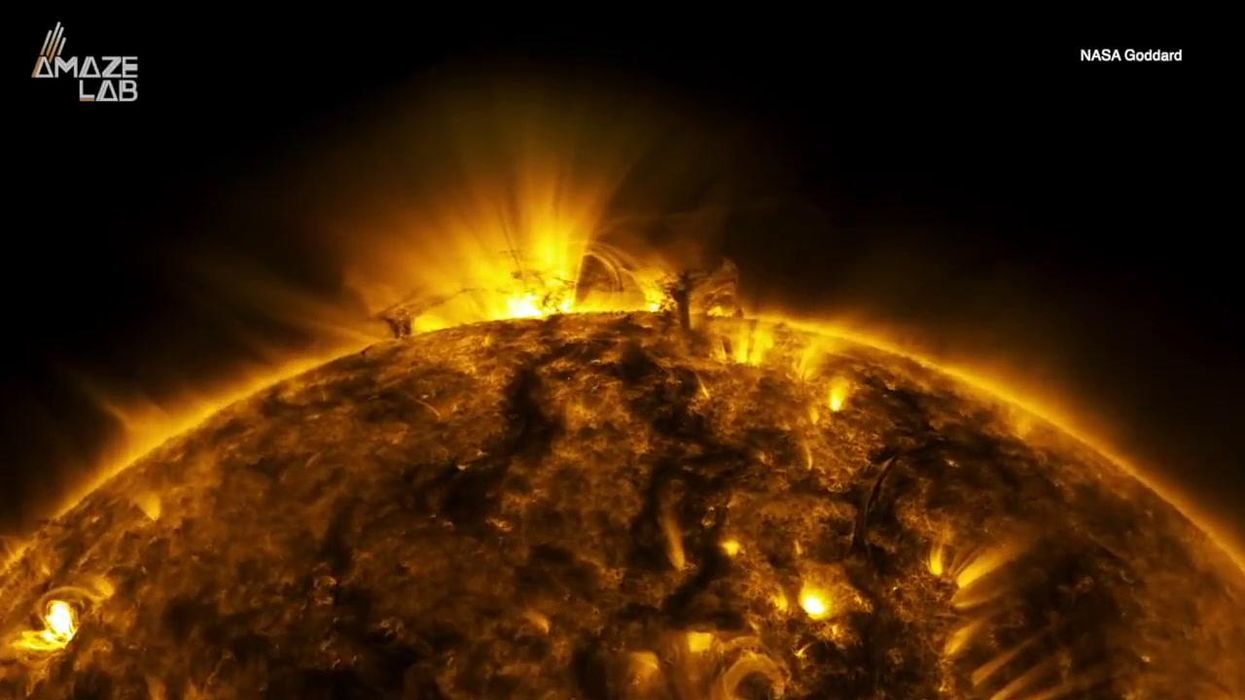Harry Fletcher
Feb 14, 2023
The Sun Release Incredible Solar Vortex the Likes of Which Have NEver …
content.jwplatform.com
The Sun has been captured in a whole new light over recent days, and astronomers are having a hard time explaining it.
Light that has never been witnessed until now has been spotted radiating from the sun by the Nuclear Spectroscopic Telescope Array (NuSTAR).
The images showed the areas of the surface-emitting high-energy and low-energy X-rays by the hottest areas of the star.
Ultraviolet light was also observed across the surface, and the new observations could prove key to further understanding of the star.
Sign up for our free Indy100 weekly newsletter
For years, scientists have struggled to comprehend how the outer layers of the Sun are far hotter than its actual surface. The outer atmosphere of the Sun is around 100 times hotter, having been recorded at more than a million degrees.
\u201cWhy is the Sun\u2019s corona 100x hotter than its surface? NASA\u2019s NuSTAR telescope took images of hidden light emitted by the hottest material in the Sun\u2019s atmosphere. The observations may help scientists solve one of the biggest mysteries of our nearby star: https://t.co/gaoLj6PrKa\u201d— NASA JPL (@NASA JPL) 1675969892
Pictures released by the NuSTAR show high-energy X-rays in blue, while the lower-energy X-rays detected by X-ray Telescope instrument on the Hinode spacecraft are shown in green and ultraviolet light detected from NASA's Solar Dynamics Observatory are in red.
When images of the Sun taken from all three last June are put together, they show a complete picture which captures radiation across the entire star’s atmosphere.
While it’s not clear why the atmosphere is so much hotter than the surface, a theory posits that outbursts of heat and light known as nanoflares are the cause.
The NuSTAR could be crucial to furthering the theory. The pictures obtained from it show light which is thought to be the result of a large group of nanoflares occurring close to one another in the atmosphere.
It could be key to future study, given that individual nanoflares cannot be detected due to the star’s immense heat.
It comes after news emerged that a section of the Sun has left the surface and begun circulating around the top of the star as if it were a huge polar vortex - and it’s not exactly clear why it’s happened.
Have your say in our news democracy. Click the upvote icon at the top of the page to help raise this article through the indy100 rankings.
Top 100
The Conversation (0)














